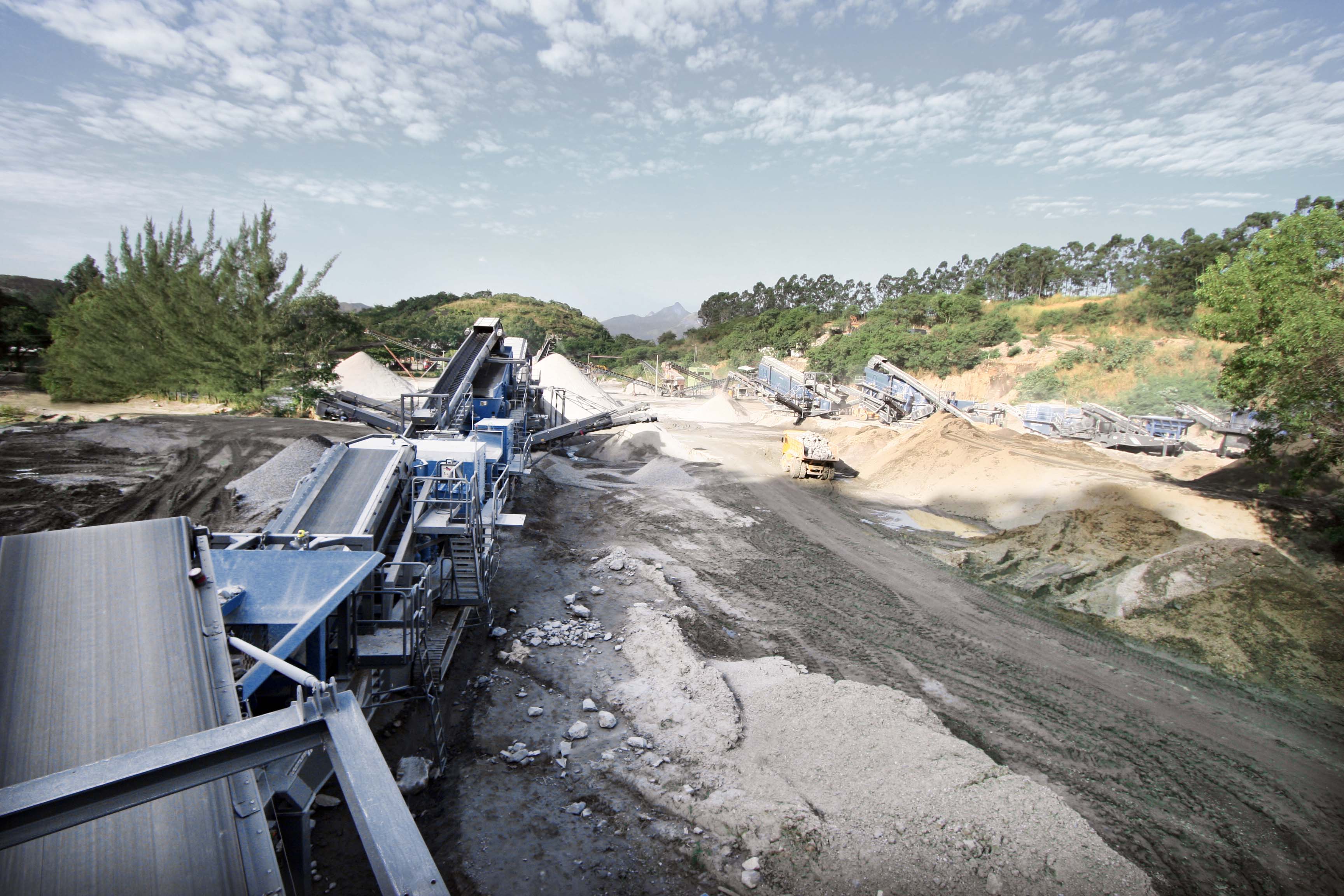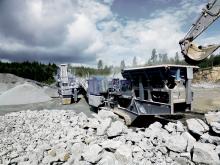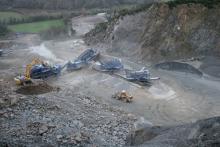
What may well be the world’s largest mobile crushed stone plant started operation near Rio de Janeiro, Brazil, in 2013, where gneiss rock is being processed with the aid of mobile crushers from Kleemann. Two of the world’s biggest sporting events, the 2014 FIFA World Cup and the 2016 Olympic and Paralympic Games, will be hosted in Rio de Janeiro, and such mega-events involve immense infrastructure projects such as those of the Brazilian company Tamoio Mineração.
Tamoio is located just a few kilometres from the centre of Rio de Janeiro and the sports arenas, and is the megacity’s only supplier of crushed stone. To meet the growing demand for aggregates for road construction, the company decided to significantly enlarge its aggregate production capacity.
The task was daunting: the new plant had to produce 900tonnes/hour in grain sizes ranging from 0-32mm, making a grand total of 2.5 million tonnes/year.
Such project requirements rapidly conjure up visions of a stationary processing plant.
“In this case, there were several reasons in favour of a mobile solution. For one thing, the plant had to be commissioned as soon as possible. For another, it was important that the plant set-up could be flexibly positioned in the quarry in order to remain as close to the point of extraction at all times and thus minimise the costs and material handling times,” says Luiz Zoch,
The plants‘ resale value was another factor as each can also be used individually.
Before finalising the decision, Orlando Ribeiro, Tamoio Mineração‘s vice president, visited several large quarries in North America, Asia and Europe in order to obtain a first-hand impression of various work flows.
He felt Kleemann offered the right combination, including diesel-electric power systems in the quarry. Kleemann, a
Tamoio Mineração opted for two plant combinations with almost identical set-ups.
“Our rate of production is enormous, due also to the plants‘ mobility. That means that we can respond flexibly to all required changes,” says Orlando Ribeiro.
In the first crushing stage, two large jaw crushers perform the preliminary crushing. One is a Mobicat MC 140 Z with a crusher inlet of 1,400 x 1130mm and the other is a Mobicat MC 120 Z with a crusher inlet of 1,200 x 800mm. These two then directly feed the two downstream plant combinations simultaneously.
The subsequent plant combinations are identical. In the second crushing stage they comprise two mobile Mobicone MCO 13 cone crushers which reduce the material from some 280mm to a size of between 0-90mm. In the third crushing stage, two further mobile cone crushers, Mobicone MCO 13 S, with integrated triple-deck screening units discharge the first end-product with a grain size of 22-32mm. Final screening is then undertaken by two mobile Mobiscreen MS 23 D triple-deck screening units of type. With screen sizes of 8,000 x 2,300mm, each of the two screening units has sufficient performance reserves to reliably discharge the roughly 400tonnes required per hour and plant in the four other final grain sizes which are below 22mm.
Orlando Ribeiro is confident that the good partnership between Tamoio Mineração and Kleemann contributed to the success and additionally boosted the plants‘ effectiveness.
“We enjoy a very close relationship and meet daily to discuss the project. Besides, the Kleemann technicians are there for us 24 hours a day.” Machine faults or failures are now almost unknown.








